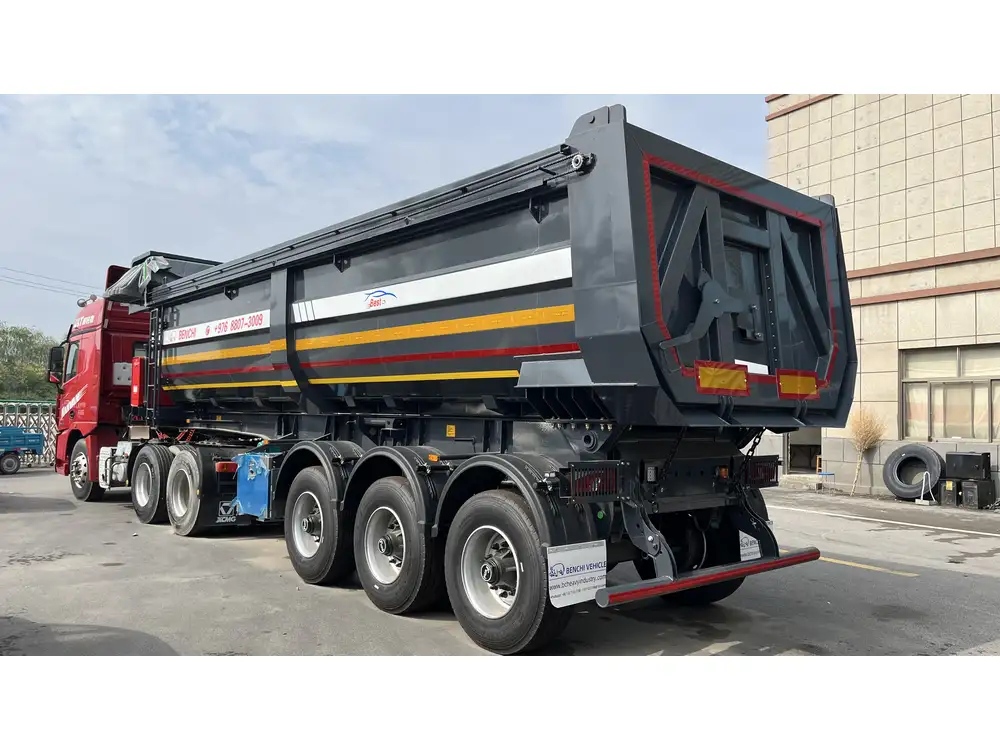Detaching a semi-trailer may seem straightforward, yet it’s a task that requires precision and care to ensure safety and avoid damage. This guide outlines every step of the process while addressing potential issues that may arise, enabling operators to master the necessary skills needed for effective and safe trailer detaching.
Understanding the Components of a Semi-Trailer
Before delving into the detachment process, it’s vital to grasp the essential components involved in a semi-trailer:
| Component | Description |
|---|---|
| Fifth Wheel | The coupling device mounted on the tractor, linking the vehicle to the trailer. |
| Kingpin | The pin that connects the semi-trailer to the fifth wheel, allowing for articulation. |
| Landing Gear | The retractable supports used to stabilize the trailer once detached. |
| Safety Chains | Chains that provide additional security by linking the trailer to the tractor during transit. |
| Trailer Wiring | The electrical connections that power trailer lights and brakes. |
Understanding these components is crucial for effectively detaching a semi-trailer without incident.
Pre-Detachment Checklist
Prior to detaching a semi-trailer, it’s essential to perform a thorough inspection and ensure the following:
- Environment Check: Ensure that the area is clear of obstructions and that the ground is stable and level.
- Park the Tractor: Engage the parking brake on the tractor to prevent any movement during the detachment process.
- Inspect the Trail: Assess the condition of the trailer and its components—look for visible damage or wear.
- Power Off: Turn off the vehicle’s engine and any electrical systems related to the trailer.

Step-by-Step Process for Detaching a Semi-Trailer
Step 1: Positioning the Tractor
Align the tractor with the semi-trailer to ensure a direct connection. The tractor needs to be in a straight line with the trailer to facilitate a smooth detachment.
Step 2: Adjusting the Landing Gear
- Unhook Safety Chains: If applicable, carefully unhook the safety chains ensuring they don’t snag or cause a trip hazard.
- Lower the Landing Gear: Use the landing gear crank to lower the support legs. Ensure the legs are fully deployed to stabilize the trailer.

Step 3: Release the Fifth Wheel Lock
- Check the Trailer Connection: Verify that the kingpin is properly seated in the fifth wheel.
- Release the Lock: Pull the release handle on the fifth wheel. This action will disengage the locking mechanism that holds the kingpin. It’s crucial to wait for any audible signals or visual cues that indicate the lock has been successfully released.
Step 4: Positioning the Tractor
Slowly drive the tractor forward. Maintain a straight line to ensure the kingpin disconnects cleanly from the fifth wheel. Avoid abrupt movements that could misalign the connection.
Step 5: Finalizing the Detachment
- Ensure Complete Separation: Once the kingpin has completely cleared the locking mechanism, stop the tractor and do a manual inspection.
- Park the Semi-Trailer: If necessary, adjust the angle of the trailer to ensure stability and prevent rolling.

Common Problems and Solutions
In the world of semi-trailer operation, certain issues may arise during the detachment process. Here’s a list of common problems and recommended solutions:
| Problem | Solution |
|---|---|
| Kingpin jammed in the fifth wheel | Ensure the trailer is level and apply lubricant carefully to facilitate smooth release. |
| Difficulty lowering landing gear | Check for obstructions; clean the mechanism and lubricate if necessary. |
| Electrical failures in wiring | Inspect wiring for damage; replace faulty connectors or wiring as needed. |
| Stability concerns post-detachment | Employ wheel chocks or blocks to prevent trailer movement. |
Safety Precautions
Safety should always remain a priority during the detachment of a semi-trailer. Here are critical safety precautions to follow:
- Always Use Gloves: Protect your hands, as the components can be sharp or dirty.
- Wear Safety Goggles: Shield your eyes from potential debris.
- Stay Alert: Be aware of your surroundings and any personnel who may be nearby.
- Communicate: Use hand signals or an organized communication method with team members during the process.
Frequently Asked Questions (FAQs)

How can I tell if the kingpin is securely locked?
Check for visual indicators such as the locking mechanism showing a green signal if equipped, or listen for an audible click upon securing.
What if my landing gear won’t lower?
Inspect for debris or damage on the landing gear mechanism. If needed, use a backup wrench to apply extra force.
Is it necessary to use safety chains when detaching?
While not always necessary for detaching, safety chains should be used when transporting to enhance security, particularly on uneven surfaces.

Should I perform maintenance on the fifth wheel?
Yes, regular maintenance is vital—check the grease level and inspect for wear every few weeks based on usage.
Conclusion
Mastering the art of semi-trailer detachment is imperative for any operator within the transportation logistics space. By following our structured, detailed guide, not only can operators enhance their efficiency and safety, but they can also mitigate potential challenges that could arise during the process. The steps, precautions, and troubleshooting tips presented herein form a comprehensive resource designed to empower users in their operational needs.
Related Topics for Further Reading
- The Importance of Regular Maintenance on Semi-Trailers
- Best Practices for Safe Driving with Semi-Trailers
- Understanding the Laws and Regulations for Semi-Trailer Operations
By gaining insights into the detaching process and recognizing the broader context of semi-trailer operations, operators are well-equipped for success in the field. Embrace these practices with diligence to ensure that every journey is not only productive but also safe for all involved.



